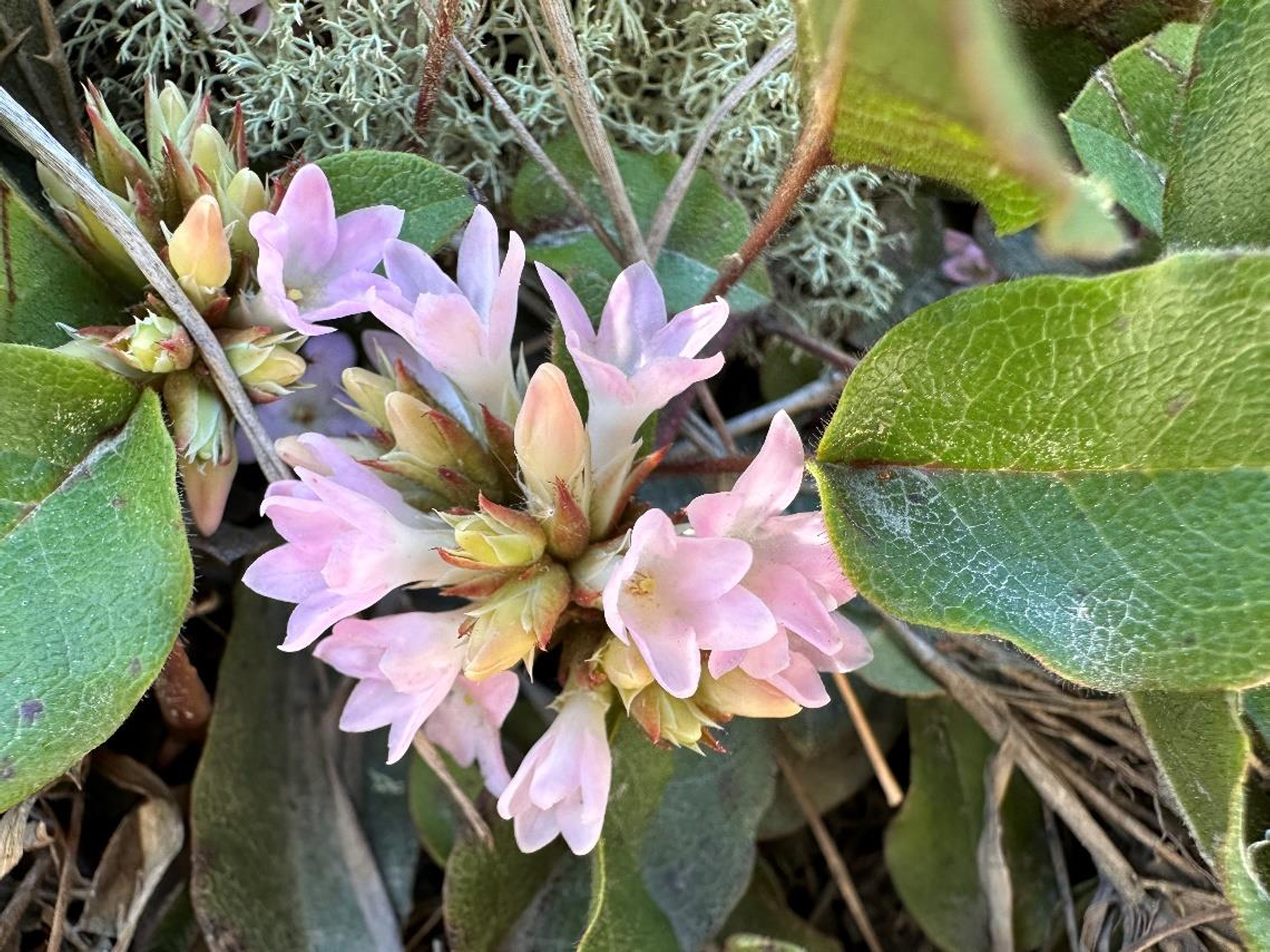Plant of the Month March 2024: Trailing Arbutus
Trailing Arbutus or the Mayflower, Epigaea repens
Northern Neck Chapter of the Virginia Native Plant Society
By Betsy Washington
Trailing Arbutus is one of our earliest blooming wildflowers and has been considered a “herald of spring” with its extremely fragrant clusters of pink to white flowers blooming from late February to April in our area. A member of the heath family which includes Mountain Laurels, azaleas and the blueberry clan, its delicate blooms were the first wildflowers the Pilgrims in Plymouth, Massachusetts saw after their first grueling winter in America, and they named it the “Mayflower”. While seemingly uncommon due to its early bloom and specialized habitat requirements, it was once common in acidic oak-heath, oak-chestnut, and hemlock forests across much of eastern of North America, from Newfoundland south to Florida and west to the Northwest Territories and Kentucky. But its beauty and amazing fragrance were so admired that it was harvested rampantly to make sweet smelling wreaths and garlands.
This slow-growing prostate shrub became increasingly scarce in Massachusetts around 1900 due to the harvesting for garlands. Wisely, conservation advocates lobbied the state to make it the state flower. The legislature passed the issue to the State Agriculture Dept. who passed the issue to school children to vote for a state flower and they, in their youthful wisdom, chose the Mayflower (=Trailing Arbutus). While it took about 18 years of conservation advocacy, the children are responsible for it being the State Flower. A few years later, the state legislature made it illegal to “pull up”, “dig up”, or “injure” any part of the plant located on public lands and punishable by a fine of $50. Not only is it the State Flower of Massachusetts but it is the Floral Emblem of Nova Scotia (since 1901).
In Virginia, it is found in nearly every county and listed as ‘common’ in the mountains, frequent in the Piedmont, but infrequent in the Coastal Plain where it’s found in specialized habitats having strongly acidic, sandy or peaty woodland soils. Look for it in in oak or pine woods, often under other heath family members on steep slopes, exposed bluffs, trail cuts or banks – all places that shed excessive leaf litter. And if you are lucky enough to find it in bloom, be sure to bend down to smell the spicily fragrant flowers!
The Latin name, Epigaea, means “trailing upon the earth” and is an apt description of this low-growing, prostrate sub-shrub. The brown, woody trailing stems are distinctively covered with long rust-colored hairs. The 1 to 4” leathery, evergreen leaves are oval with slightly heart-shaped base and alternate along the stems. But the real show is the small clusters of exquisite pink to white flowers at the tips of stems and in upper leaf axils. Each flower is about ½” across with the five fused petals forming a narrow tube then flaring open into 5 lobes. The inside of the corolla tube is covered with dense white furry hairs. The flowers vary from white to pale pink to rose, but all are exceedingly beautiful. And wow, what a fragrance! They are sweet-scented with a hint of spice – and truly memorable so be sure to bend down and take a sniff.
Trailing Arbutus is very slow growing and should never be dug or collected from the wild! It is notoriously difficult if not downright impossible to transplant which nearly always ends in failure. As one enthusiast said, “Admire them, sniff them, and leave them in their native homes”. Like many members of the Heath Family, Trailing Arbutus relies on special mycorrhizal fungal partners to supply nutrients so it is extremely sensitive to disturbance. Once pollinated, they form a fleshy berry-like capsule and their seeds are dispersed by ants as are 30% of our wildflowers, amazingly enough.
For the avid gardener who wants to try their hand at Trailing Arbutus, some specialty native plant nurseries do propagate this wildflower from seed. We hope to have some at our Fall Plant Sale this year. If you are fortunate enough to find nursery raised seedlings, plant them in strongly acidic, humus-rich soil in partially shaded to shady woodlands – perfect for road or trail cuts or cliff banks. Look for a site where other members of the heath family are growing with moist but well drained acidic sandy soil or peaty soil on a wooded slope. Water well and be patient. Once established they need minimal care and are able to survive extremely challenging, acidic soils where many other plants fail to thrive.
Trailing Arbutus has a long history of medicinal uses among Native Americans. The Algonquins and Cherokees used infusions of the leaves to treat kidney ailments and to treat vomiting, diarrhea, and abdominal distress. The Iroquois used it to treat labor pains, rheumatism, and kidney ailments. But best of all, the Great Plains Potawatomi considered it their tribal flower, coming directly from their divinity.
To me, this plant is divine – beautiful, fragrant, and always a thrill to find, often on steep bluffs or north facing slopes such as at Bush Mill and Hickory Hollow NAP, nestled amongst gorgeous mosses and lichens.
If only you could scratch and sniff: the highly fragrant March flowers of Trailing Arbutus
Delicate clusters of flowers cascade down a shady bank
Trailing Arbutus can form impressively large mats in its preferred habitat - oh what a feast!



